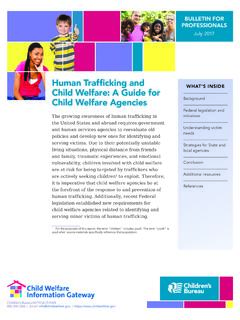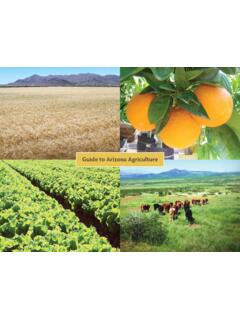Transcription of SIMPLE ABOUT THE TRUTHGENDER PAY GAP - ed
1 SIMPLE TRUTHABOUT THE GENDER PAY GAPFALL 2018 EDITIONTHETHE SIMPLE TRUTH ABOUT THE GENDER PAY GAP | Fall 2018 EditionAAUW by AAUW1310 L St. NW, Suite 1000 Washington, DC 2018 AAUW All rights reserved Printed in the United States of AmericaFirst printing: 2011160-18 ACKNOWLEDGMENTS The Fall 2018 edition of The SIMPLE Truth ABOUT the Gender Pay Gap was written by AAUW Senior Researcher Kevin Miller and Senior Vice President for Public Policy and Research Deborah J. Vagins. Director of Federal Policy Anne Hedgepeth and State Policy Counsel Kate Nielson contributed additional writing, and Research Assistant Raina Nelson provided research support. We are grateful for the contributions of former members of our research, policy, and editorial teams who helped build The SIMPLE Truth into a preeminent source for facts and guidance on the gender pay thanks our members and supporters for their generous support in making this publication and organization possible, especially the members of the Mooneen Lecce Giving Circle.
2 SIMPLE TRUTHABOUT THE GENDER PAY GAPFALL 2018 EDITIONTHETHE SIMPLE TRUTH ABOUT THE GENDER PAY GAP | Fall 2018 EditionAAUW OF CONTENTS Foreword ..4 Introduction ..5 What Is the Pay Gap? ..7 Where Do the Data Come From? ..7 State-Level Data ..7 How Does the Pay Gap Affect Women of Different Demographics?..9 Sexual Orientation and Gender Identity ..11 How Does Education Affect the Pay Gap? ..12 What Causes the Pay Gap? ..14 Occupational Segregation ..14 The Motherhood Penalty ..16 Direct Gender and Race Discrimination and Bias ..17 Conclusion ..18 Recommendations ..19 Individuals ..19 Employers ..19 Conducting Pay Audits ..20 Prohibiting Retaliation for Wage Disclosure ..20 Banning the Use of Prior Salary History ..21 Government ..22 Federal ..22 State.
3 24 What Should I Do If I Experience Pay Discrimination at Work?..25 Take Action with ..27 THE SIMPLE TRUTH ABOUT THE GENDER PAY GAP | Fall 2018 EditionAAUW Research has been a key element of AAUW s work for women s pay equity since the release of our 1896 report Compensation in Certain Occupations of Women Who Have Received College or Other Special Training. Research empowers our members and other advocates with the facts they need to express the problems associated with the gender pay gap: It s real, it s persistent, and it s causing economic hardships for women and their families. And, as demonstrated by the fact that we ve been working on this issue since 1896, the gap is closing too year AAUW released its strategic plan with a vision to achieve equity for all. Closing the gender pay gap is a core element of our work to improve women s economic security, and our research informs and enhances our ongoing programs and advocacy that are pushing to end the pay gap.
4 We continue to advocate for much-needed federal legislation that would strengthen fair-pay laws and level the playing field for women. We ve also been proud to support and witness real progress at the local and state level, as lawmakers devise creative approaches to closing the gender pay gap. We promote best practices for employers, and we are working to empower women to secure their financial futures. In partnership with cities and organizations across the United States, our Start Smart and Work Smart salary negotiation workshops and newly-launched online e-learning tool are expanding to help millions of women secure the pay they deserve. Pay equity will continue to be an AAUW priority until the gap is fully eliminated. We hope this new edition of The SIMPLE Truth motivates and empowers you as you join us in this T. Brown, Esq. Kimberly ChurchesBoard Chair Chief Executive OfficerTHE SIMPLE TRUTH ABOUT THE GENDER PAY GAP | Fall 2018 EditionAAUW In 2017, women working full time and year-round in the United States typically were paid just 80 percent of what men were paid, a gap of 20 percent (Fontenot et al.)
5 , 2018). The gap has narrowed since 1960, due largely to women s progress in education and workforce participation and to men s wages rising at a slower rate. At the rate of change between 1960 and 2017, women are expected to reach pay equity with men in 2059. But even that slow progress has stalled in recent years. If change continues at the slower rate seen since 2001, women will not reach pay equity with men until 2106 (figure 1).The gender pay gap has lifelong financial effects. For one, it contributes directly to women s poverty. In 2017, 13 percent of American women ages 18 64 were living below the federal poverty level, compared with 9 percent of men. For ages 65 and older, 11 percent of women and 8 percent of men were living in poverty (Fontenot et al., 2018). The pay gap follows women throughout their time in the workforce, and even after they leave the workforce. Employers use of women s prior salary history to set their wages in new jobs means wage discrimination carries forward from job to job, compounding over time.
6 And because women typically are paid less than men during working years, women receive less income than men do from Social Security, pensions, and other sources when they retire. (Fischer & Hayes, 2013). Other benefits, such as disability and life insurance, are also smaller for women because these benefits usually are based on impact of the pay gap has also broadened in recent years as a result of changes in family structure. Between 1967 and 2015, the proportion of mothers working outside the home and contributing at least 50%55%60%65%70%75%80%85%90%95%100%1960 1965 1970 1975 1980 1985 1990 1995 2000 2005 2010 2015 2020 2025 2030 FIGURE 1: Women's Median Annual Earnings as a Percentage of Men's for Full-time, Year-round Workers1960-2017 and ProjectionsProjection of 1960 2017 TrendProjection of 2001 2017 TrendEquity in 2059 Equity in 2106 Source: AAUW analysis of Fontenot (2018)THE SIMPLE TRUTH ABOUT THE GENDER PAY GAP | Fall 2018 EditionAAUW quarter of the family s earnings rose from less than a third (28 percent) to nearly two-thirds (64 percent).
7 Today, 42 percent of mothers with children under the age of 18 are their families primary or sole breadwinners (Glynn, 2016). As families increasingly rely on women s wages to make ends meet, the gender pay gap directly affects more men and children as the gender pay gap would have a large impact on women, their families, and the economy. Eliminating the gender pay gap by increasing women s pay to match that of men of the same age and education level would cut the poverty rate for all working women in half, regardless of their family structure. Closing the gender pay gap would also provide a boost to the economy. Providing equal pay to women would increase the wages paid into the economy by $513 billion, which represents 3 percent of the 2016 gross domestic product (Milli et al., 2017). This guide provides key facts ABOUT the gender pay gap in the United States. Included are breakdowns of the gender pay gap by race and ethnicity, by education, by age, and by occupation, as well as a detailed discussion of the causes of the gender pay gap.
8 In addition, the guide provides detailed recommendations ABOUT how individuals, employers, and policymakers can contribute to closing these pay SIMPLE TRUTH ABOUT THE GENDER PAY GAP | Fall 2018 EditionAAUW IS THE PAY GAP? The pay gap is the difference in men s and women s median earnings, usually reported as either the earnings ratio between men and women or as an actual pay gap, as defined below. The median value is the middle value, with equal numbers of full-time workers earning more and earning less. In 2017, median annual earnings in the United States for women and men working full time and year-round were $41,977 and $52,146, respectively (Fontenot et al., 2018).The ratio and gap above are calculated comparing women of all races and ethnicities to men of all races and ethnicities. The gap in the earnings for women of different racial and ethnic groups is usually calculated with white, non-Hispanic men as the comparison group. These comparisons are discussed in the following can also be reported on a weekly basis.
9 The gender pay gap in weekly earnings tends to be slightly smaller than the pay gap in terms of annual earnings. In 2017, the pay gap in median weekly earnings was 18 percent ( bureau of labor statistics , 2018a).WHERE DO THE DATA COME FROM?Federal agencies, such as the Census bureau , the Department of Education, and the bureau of labor statistics , conduct surveys of individuals, households, and businesses to gather information ABOUT people s salaries and other reports on national workforce participation, pay, and pay differences depend on data from the Current Population Survey (CPS) ( ), the country s primary source of labor force statistics . The CPS is a monthly survey with a sample of 100,000 households, sponsored jointly by the Census bureau and the bureau of labor statistics ( Census bureau , 2016). The estimate of the pay gap using weekly earnings is based on the annual average of median weekly earnings for the previous year, usually released every January by the bureau of labor statistics ( ).
10 The estimate of the pay gap using annual earnings is based on the CPS Annual Social and Economic Supplement, which is published each September by the Census bureau and the bureau of labor statistics . Compared with other government surveys, the CPS provides more detailed information on income. In recent years, this information has been published in the report Income and Poverty in the United States (Fontenot et al., 2018).STATE-LEVEL DATAA pay gap can also be calculated for each state (figure 2). The American Community Survey (ACS) ( ) is a detailed annual survey distributed to a broad sample of households; it supplements the census of all Americans, which only occurs once per decade. The ACS is often used (including in this report) to estimate more detailed analyses of subpopulations and geographical areas, such as the Women s Median earningsMen s median earningsEarnings Ratio = $41,977$52,1462017 Earnings Ratio = Pay Gap = [Men s median earnings Women s median earnings]Men s median earnings2017 Pay Gap = = 20%[$52,146 $41,977]$52,146= 80%THE SIMPLE TRUTH ABOUT THE GENDER PAY GAP | Fall 2018 EditionAAUW pay gap and the gap for smaller racial/ethnic groups ( , Native Hawaiian or other Pacific Islander and American Indian or Alaska Native workers).


















